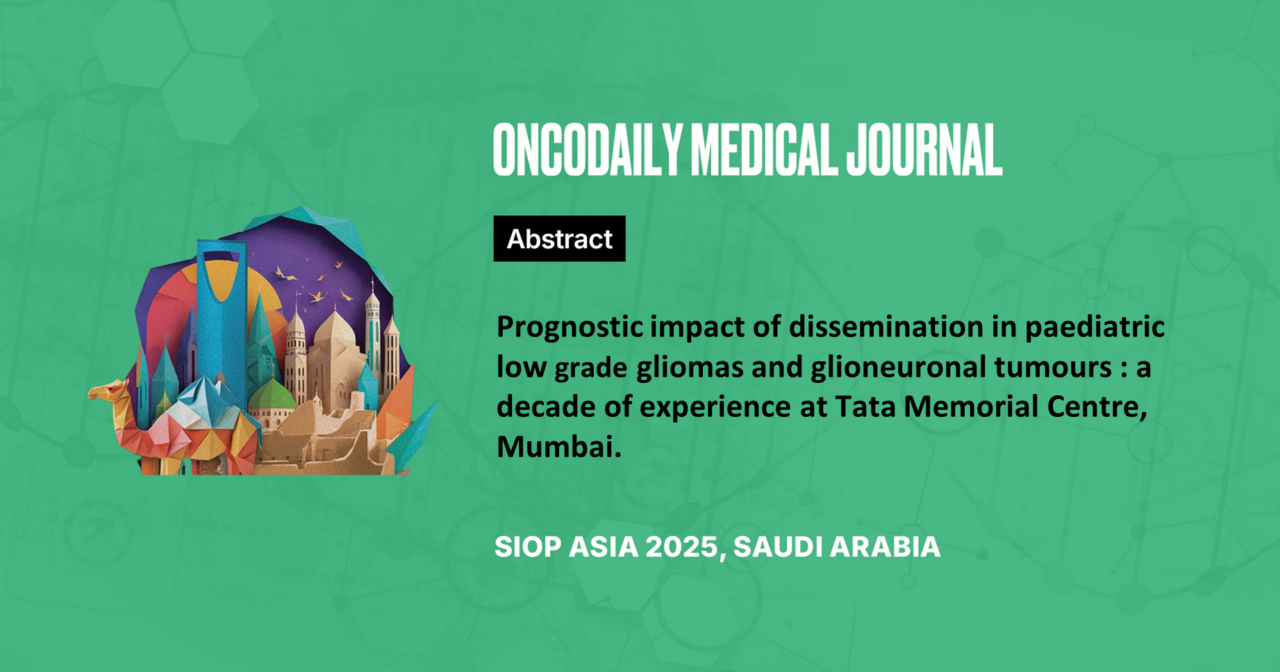Prognostic impact of dissemination in paediatric low grade gliomas and glioneuronal tumours: A decade of experience at Tata Memorial Centre, Mumbai
Abstract
Introduction: Disseminated paediatric low-grade gliomas and glioneuronal tumours (dpLGG/GNTs) are associated with poorer prognosis than non disseminated pLGG/GNTs. ‘Real world experience’ on true incidence, patterns of dissemination, outcome, and treatment options are rare. We describe our decade long experience with dLGG/GNTs in children and AYA (adolescent and young adult).
Methodology: This retrospective study (2011-2024) involved patients with dpLGG/GNTs at diagnosis/follow up. Here, we report clinical profile, molecular alterations, treatment options and survival experience of our patients.
Result: Of 317 patients with pLGG/GNTs, 35 (11%) experienced metastases at presentation or follow-up. Secondary dissemination was more common than primary dissemination (71%, 25/35 vs. 29%, 10/35). Most tumours (88%, 31/35) were located in the brain, predominantly in the supratentorial region (72%, 22/31). Histopathological testing was performed in 90% (32/35) of cases, with low-grade glial/glioneuronal tumours (53%, 17/32) and pilocytic astrocytomas (37%, 12/32) being the most common subtypes. Molecular testing was conducted in 62% (22/35) of tumours, revealing BRAF fusion as the most frequent alteration (27%, 6/22).
The median follow-up was 2.5 years from diagnosis. Four patients (11%,4/35) died at a median of 6 years from diagnosis (range, 4–10 years). Progression-free survival (PFS) rates at 1, 2, and 3 years were 83% (61–94), 53% (30–72), and 39% (17–61), respectively, while the 5-year overall survival (OS) was 96% (76–99). Cox proportional hazards analysis showed that higher age at presentation and negative BRAF alterations were associated with inferior PFS.
Conclusion: Our report suggests that the presence of dissemination may not necessarily confer a poor outcome for patients as previously reported. Survival may possibly be influenced by molecular alterations specific to each tumour. Further prospective studies are needed to learn true incidence, biology and best treatment approaches at diagnosis/follow-up.





